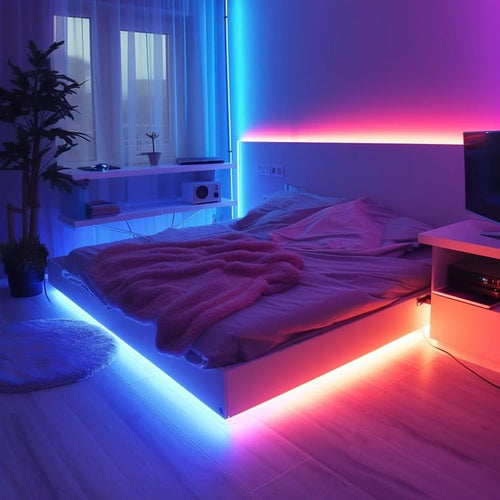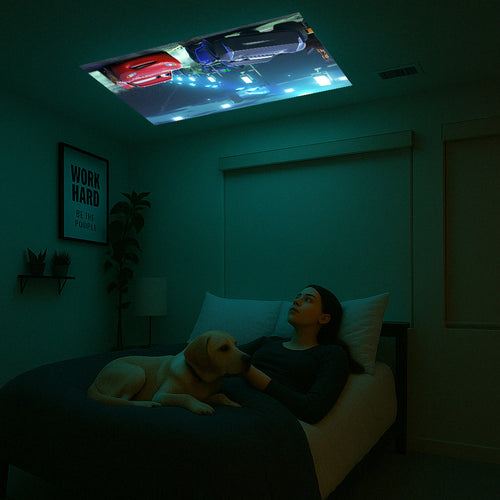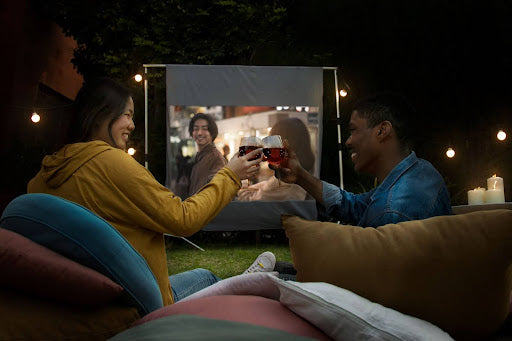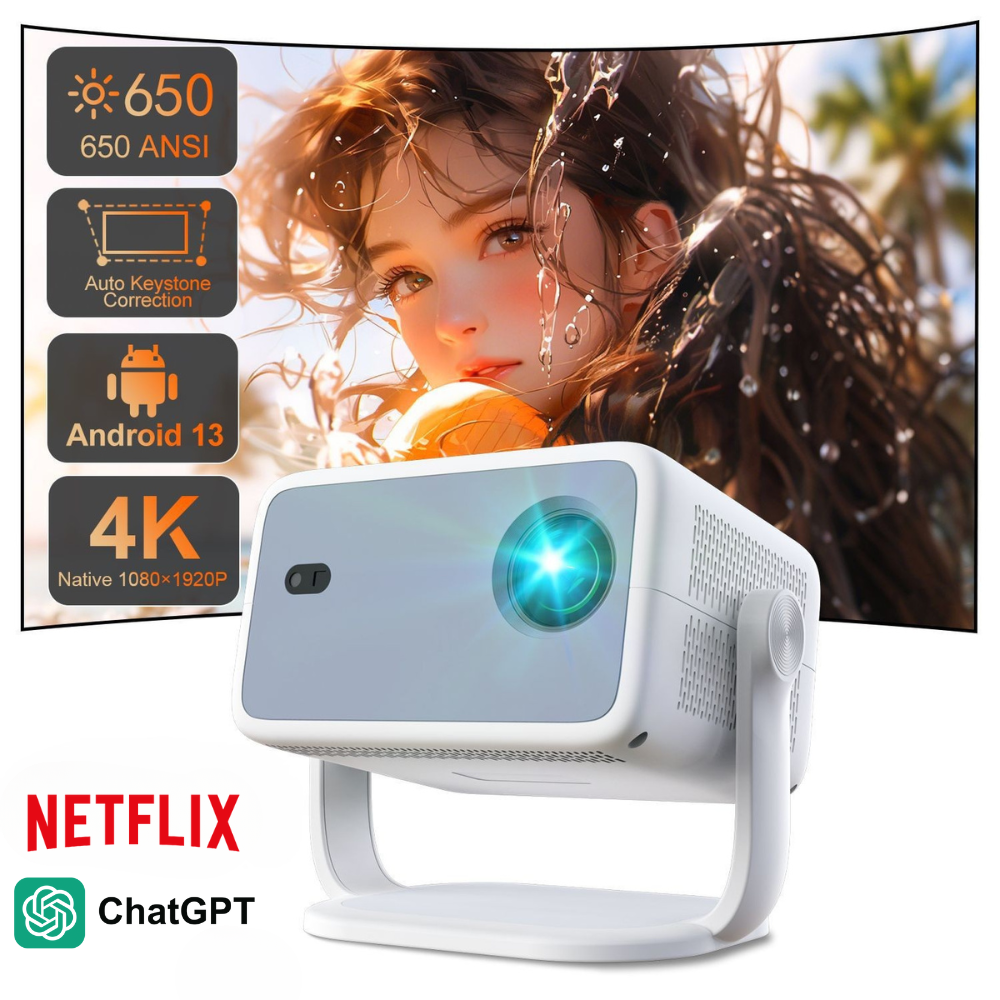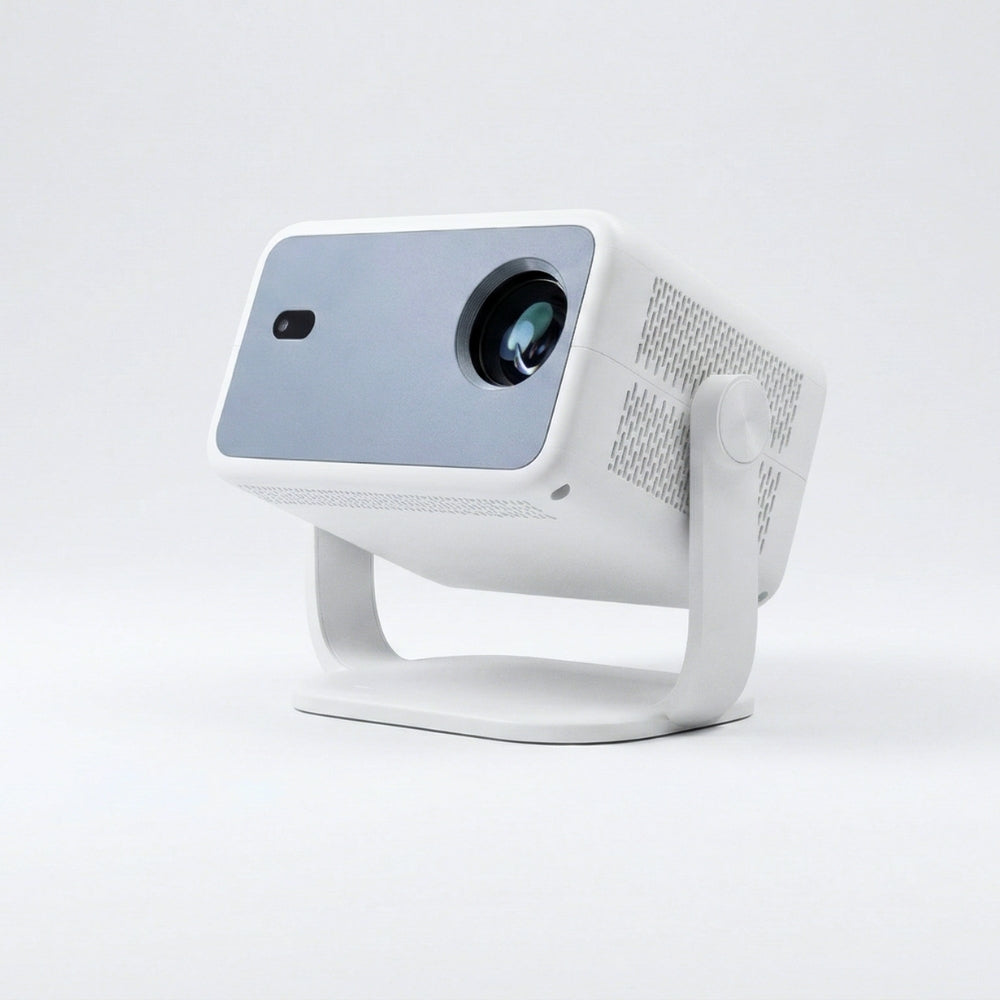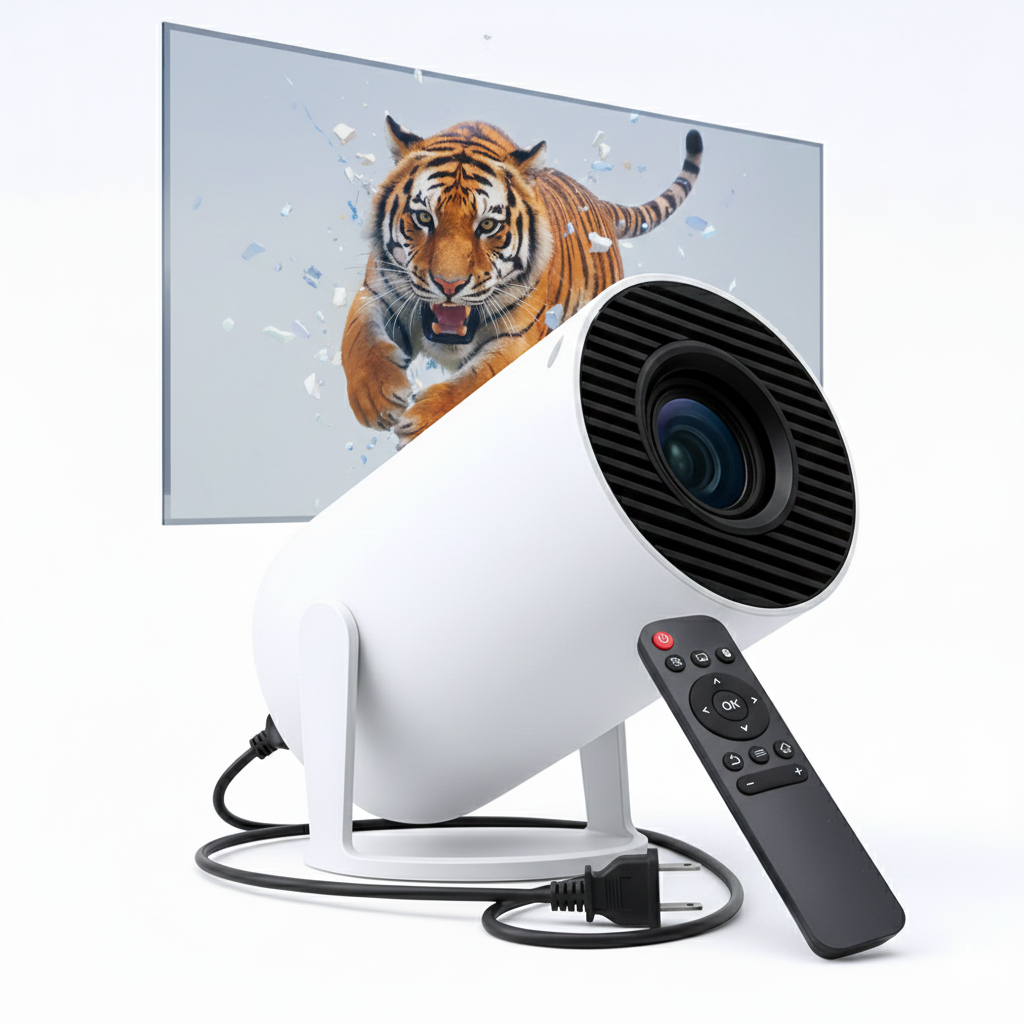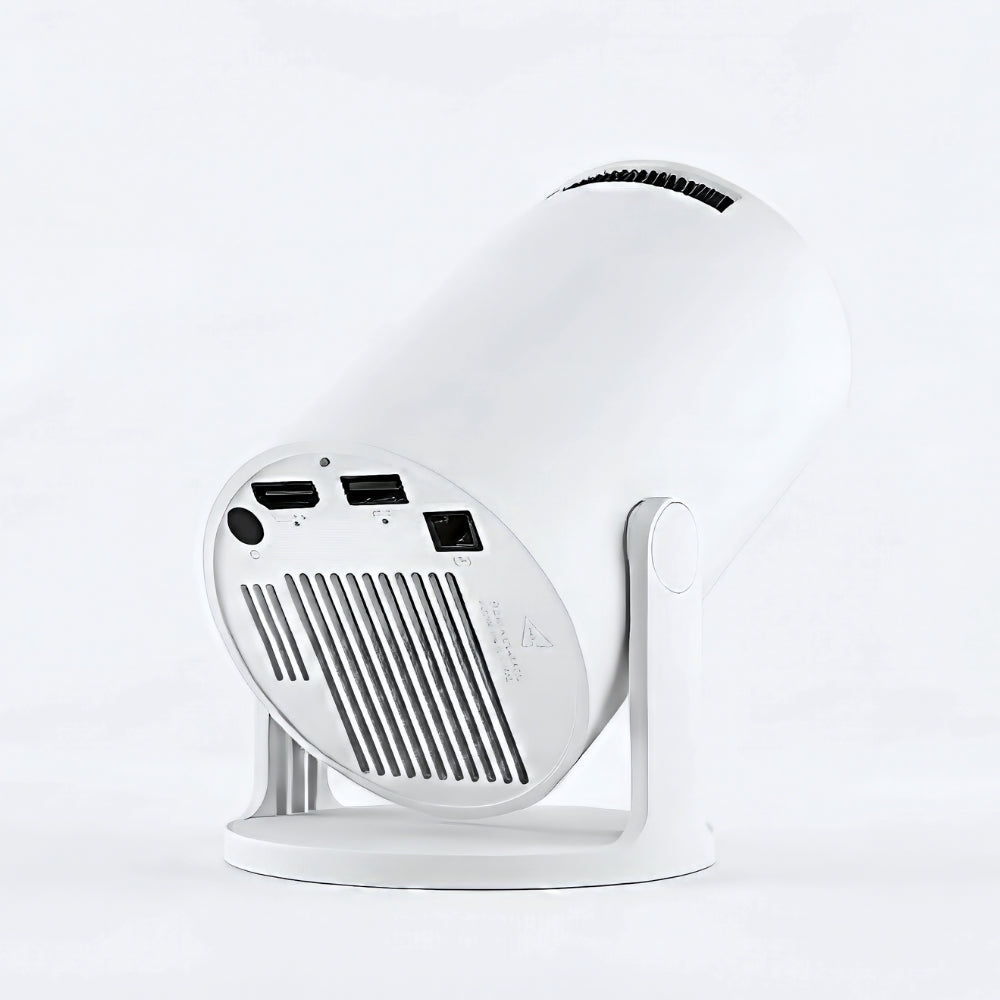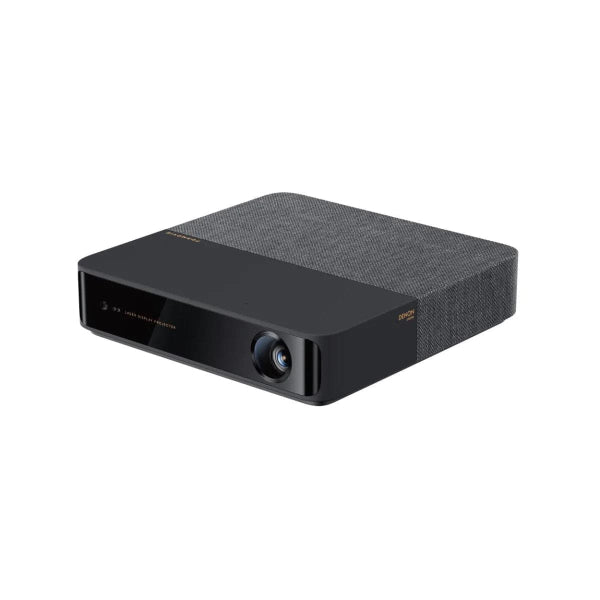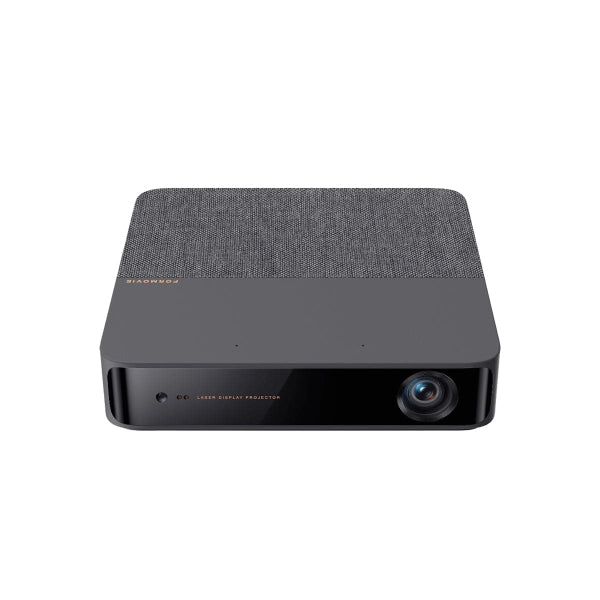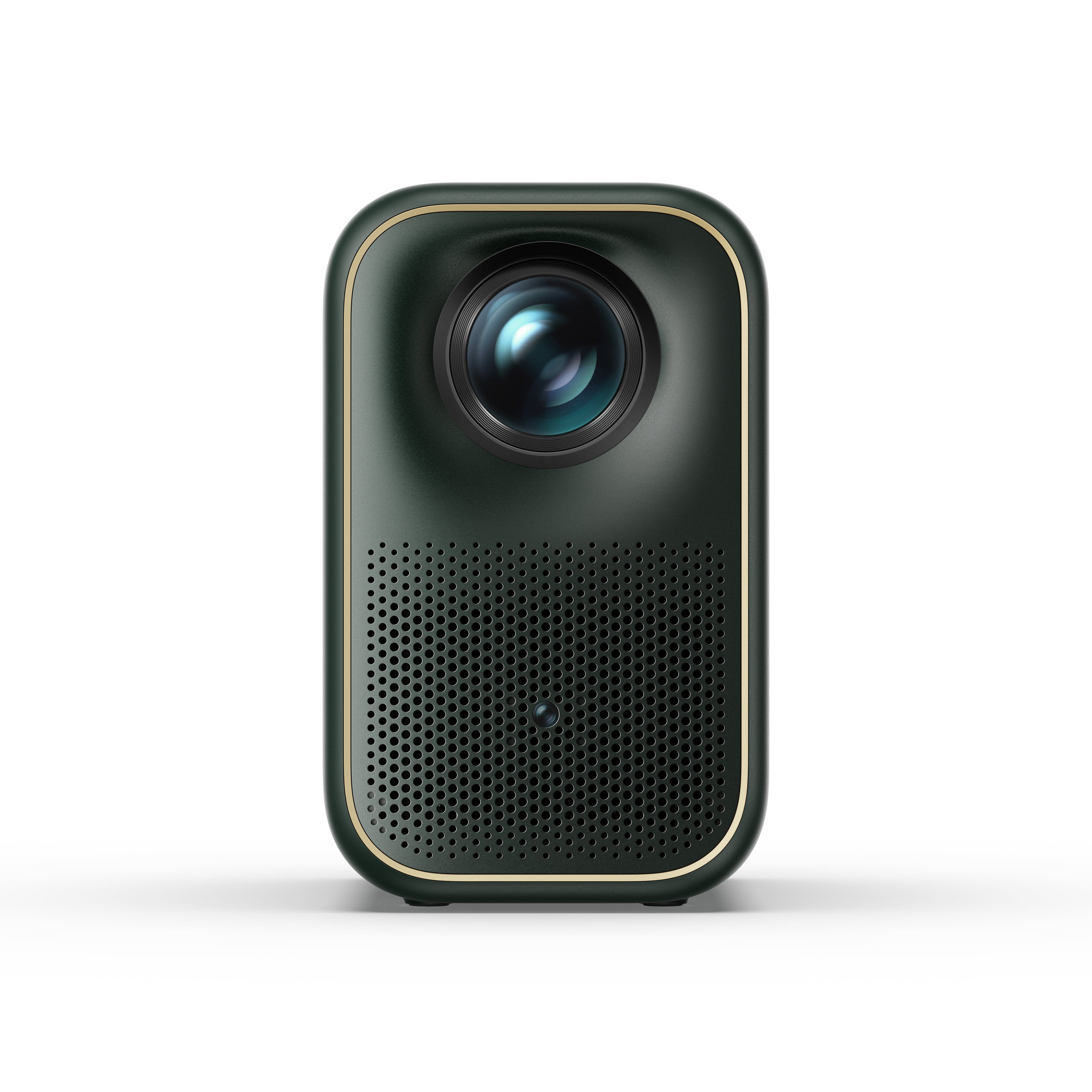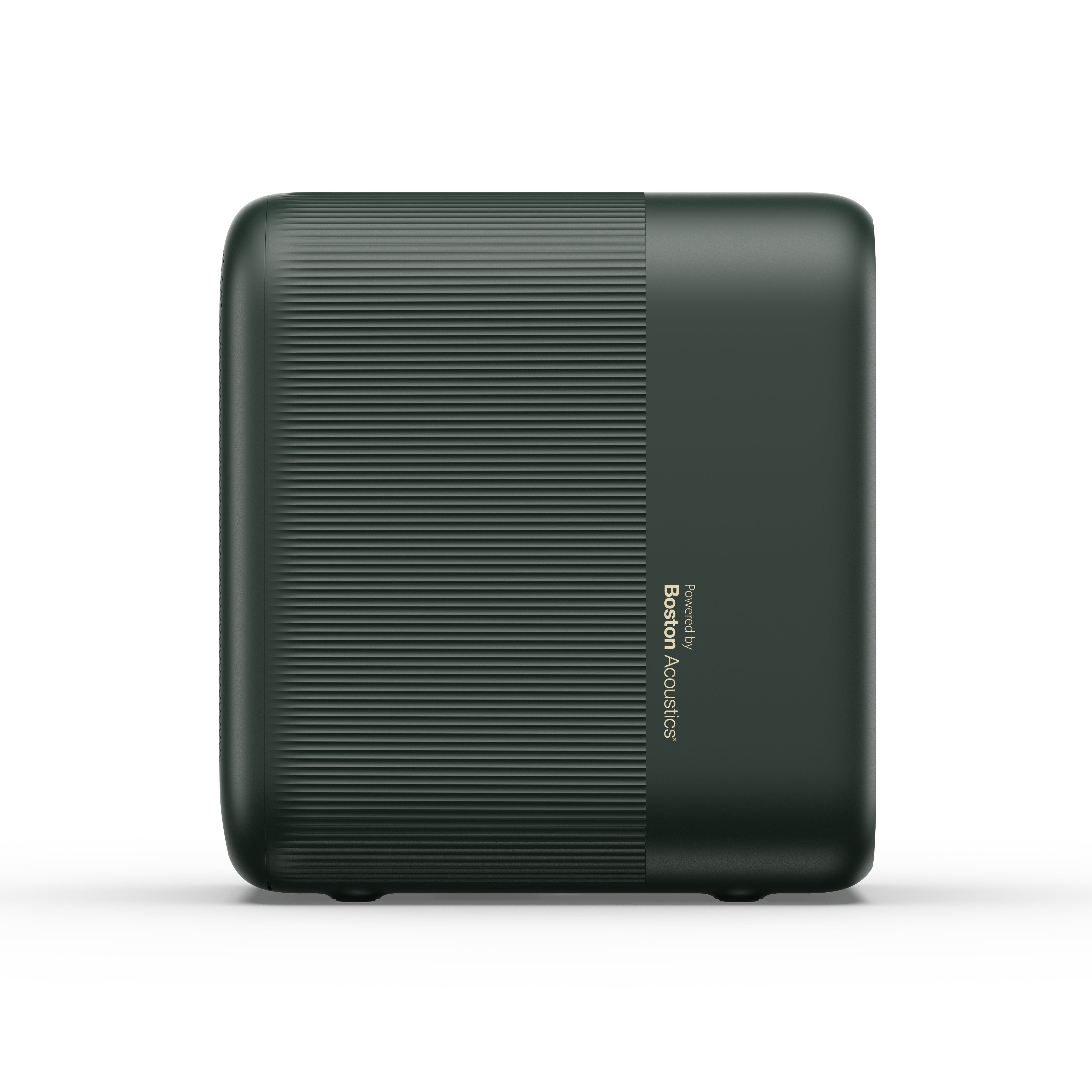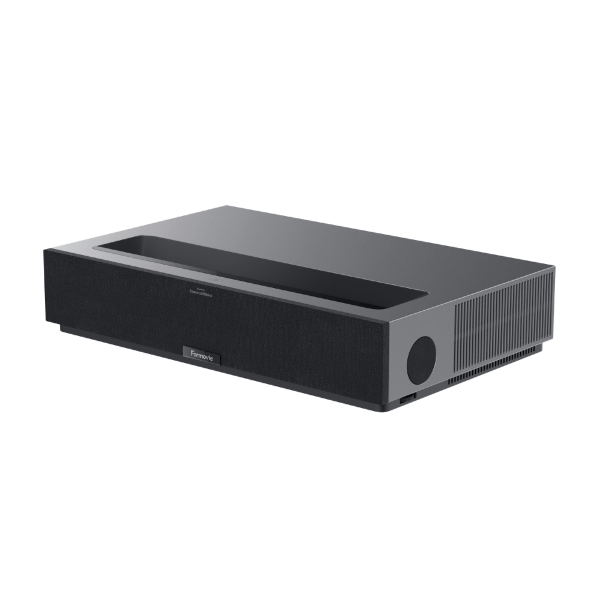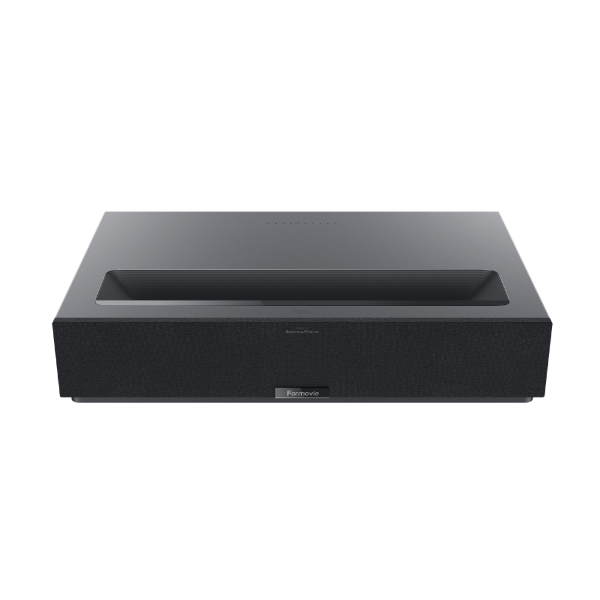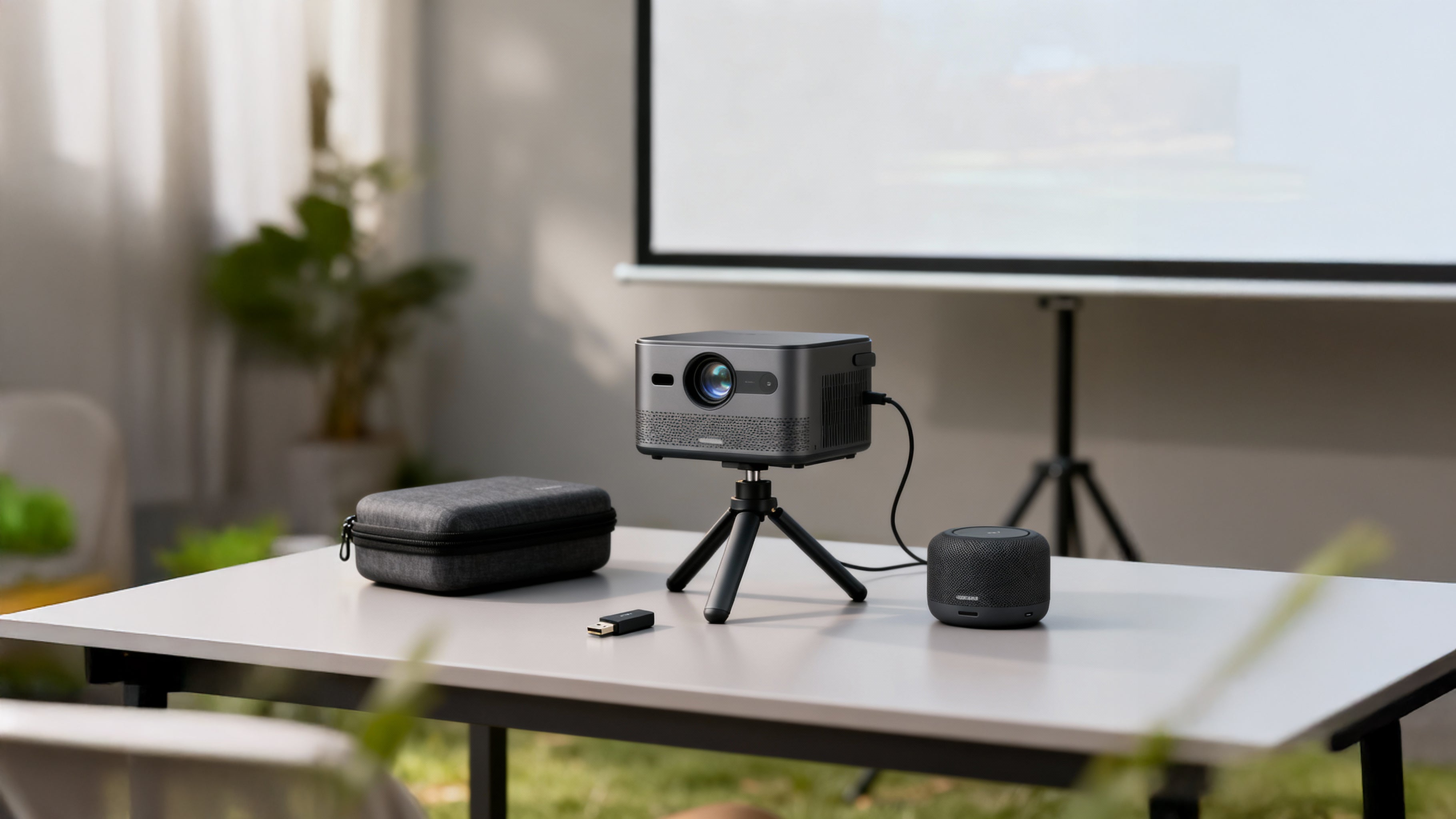Introduction
Why settle for a regular TV when you can elevate your viewing experience with a projector as a TV? It's not just about going big; it's about transforming your space into an immersive cinema. Picture this: larger-than-life visuals, flexibility in image size, and the magic of movie nights under the stars with a portable projector. Here's how to use a projector as a TV: A step by step guide.
And let's talk cost-effectiveness – often, using a projector beats buying an oversized TV hands down.
The benefits of adopting a projector as your go-to for binge-watching series or catching the latest sports game are clear:
- Size Matters: With projectors, you're no longer limited to the dimensions of a traditional TV screen. Go as big as your wall allows!
- Immersive Experience: Feel like you're part of the action with visuals that wrap around your field of view.
- Versatility: Adjust the screen size to fit any room, and move it around with ease – perfect for indoor and outdoor use.
- Portability: Some projectors are made to roam free – like the Best Portable Projector, which is compact enough for your bedroom or your backpack.
- Cost-effective: When it comes to large screen sizes, projectors often offer more bang for your buck compared to TVs.
Ready to switch? Our step-by-step guide is here to lead the way, from picking out the perfect projector to fine-tuning your setup for the ultimate home entertainment system. Let's turn that living room into a personal theater – no ticket required.
But before we dive into the details, let me introduce you to The Projection Room Store. Here at The Projection Room, we aspire to give our customers the best online service and an unforgettable experience that transcends boundaries.
Our dedicated team works tirelessly to curate a seamless platform where your entertainment dreams come to life, offering unparalleled convenience and innovation at every turn.
Now, let's talk about some remarkable projectors available at our store that can truly revolutionize your viewing experience. For those who care about portability, style, and functionality, there's the PocketCinema HD. This portable, battery-powered, Android HD projector delivers crisp visuals without the need for a power cord – making it perfect for camping under the stars or any other outdoor activity.
If you're looking for a thin and compact projector that you can bring with you anywhere you go, then the ForMovie S5 Mini HD Home Theatre Projector is just what you need. With a thickness of only 48mm and an HD resolution of 1920 x 1080P, this projector is both sleek and powerful.
So why wait? Visit our website now and explore our wide range of projectors that will help you create the ultimate home entertainment system – whether it's turning your living room into a personal theater or enjoying movies under the stars with friends using our portable projectors.
1. Choosing the Right Projector
When it comes to upgrading your TV experience with a projector, it's important to choose one that will impress your friends and bring a cinematic feel into your living room. The key is to find the right projector that does more than just provide a large screen – it should deliver sharp, vibrant images and offer convenient connections for all your devices.
1.1 Resolution and Image Quality
Let's start by talking about resolution – because when it comes to projectors, a higher pixel count means a clearer picture. Whether you're binge-watching your favorite shows or immersing yourself in a movie, you want to see every detail.
- The Importance of High Resolution: Looking for the perfect projector? Aim for at least Full HD (1920 x 1080p) to ensure crystal-clear visuals. And if you're feeling fancy, why not go for 4K?
- Plenty of Options: Depending on your preferences, there are various types of projectors available – from HD-ready to 4K UHD.
- Image Quality and Contrast Ratio: A higher contrast ratio brings out deeper blacks and more vibrant colors. It's like the difference between a regular cup of coffee and a professionally crafted masterpiece – it's all about the richness!
1.2 Throw Distance and Screen Size
Now let's talk about throw distance – the distance between your projector and the screen. Getting this right is crucial for setting up an enjoyable movie night experience.
- Finding the Ideal Throw Distance: Measure how far your projector will be placed from the screen, then look for a model that can fill your screen without any hassle.
- Calculating Screen Size: Got a tape measure? Great! Measure your wall or screen and use the projector's specifications to determine if it fits perfectly like your favorite pair of jeans.
1.3 Connectivity Options
Next up, let's explore the different connectivity options that projectors offer. This is especially important if you plan on connecting streaming devices, game consoles, or even an old-school DVD player.
- Easy Plug-and-Play: HDMI is the go-to choice for high-quality audio and video transmission in a single cable. However, don't overlook the importance of VGA and USB ports – they can come in handy for older devices or situations where HDMI isn't available.
- Versatile Compatibility: With multiple ports at your disposal, switching between binge-watching sessions and gaming sessions becomes effortless.
For those who prioritize portability without compromising on impressive visuals, check out the Formovie S5 Mini HD Home Theatre Projector. It's compact enough to bring along wherever you go.
If you're looking for a more advanced option that elevates your viewing experience to new heights, consider upgrading to The Spotlight Projector Pro. This enhanced version offers improved resolution, hardware, and design – truly taking your entertainment to the next level.
Now that we've covered the essential factors to consider when choosing a projector, it's time to roll up our sleeves and position this awesome device for the best viewing experience!
2. Setting Up Your Projector
Getting your projector up and running involves more than just plugging it in and hitting the power button. The magic of a crisp, clear image blossoms from the attention you give during the setup process. Let’s dive into the key steps to ensure your projected TV experience is nothing short of spectacular.
Finding the Right Location
1. Considering ambient light conditions is crucial; too much light can wash out your image, making it hard to enjoy that midday sports game or movie marathon. Dark curtains or blinds can be a game-changer here. When it comes to placement options, you have a choice: a ceiling mount offers a permanent, space-saving solution, while a table mount provides flexibility and ease of movement. Want to catch the big game in your backyard? A portable stand might just be your ticket to an outdoor theater experience.
2. Mounting Options: Deciding between a ceiling mount, wall mount, or portable tripod stand depends on your space and preference. Ensuring stability and safety is key, so proper installation techniques are non-negotiable – nobody wants a projector doing a high-dive during their favorite show! For those who prioritize mobility and convenience, consider something like the Mini Projector MAX, which promises an easy setup for those spontaneous movie nights wherever you please.
3. Adjusting Keystone and Focus: Mastering keystone correction ensures that the image on your screen doesn’t resemble a trapezoid – unless that’s your avant-garde preference! Tweak the keystone to get that perfect rectangular image that makes you forget you're at home and not in a cinema.
Achieving optimal focus is akin to adjusting binoculars; you turn that lens until the picture snaps from blurry to sharp. The result? A crystal-clear image that allows for an immersive viewing experience down to the finest detail.
And don't forget about compact options like the Mini Projector Pro for those tight spaces or cozy setups where a full-sized projector might not be practical.
With these steps covered, your projector will be all set up for its grand debut as your new TV. Get ready to sit back, relax, and bask in the glow of your home cinema masterpiece.
3. Connecting Your Devices to the Projector
When everything is ready and your projector is in the perfect position, it's time to connect your devices and start enjoying your content on the big screen. This step is crucial for bringing together all your media sources and creating the immersive experience you're aiming for.
Connecting Video Sources
-
Using HDMI Cables: The easiest way to connect modern devices like streaming sticks, gaming consoles, or Blu-ray players is through HDMI cables. These cables transmit both high-definition video and audio signals, making the setup process quick and hassle-free.
If you have a state-of-the-art projector like the Formovie S5 Mini HD Home Theatre Projector, which offers full HD resolution, using an HDMI source will ensure that you enjoy every detail with crystal-clear picture quality. - VGA Connections: If you have older devices, VGA connections are still widely used. While VGA cables only carry video signals (meaning you'll need a separate cable for audio), most projectors come with VGA ports to support compatibility with legacy equipment.
- Adapters and Converters: In some cases, direct connections between devices may not be possible due to different ports or interfaces. That's when adapters and converters come in handy. These devices enable you to bridge the gap between incompatible devices and ensure that everything works seamlessly together.
Audio Options
Good sound quality is essential for a complete viewing experience with your projector.
- Built-in Speaker: Many projectors come with built-in speakers that can serve as a convenient audio solution. While these speakers may not deliver booming sound, they are sufficient for casual movie nights or basic presentations.
- External Speakers or Sound Systems: If you want to elevate your audio experience or if you're hosting a larger gathering, connecting external speakers or a full sound system is highly recommended. You have a wide range of options available, from simple plug-and-play speakers to advanced surround sound setups, allowing you to customize your audio setup according to your preferences.
Remember, whether you're watching the latest blockbuster or enjoying a marathon of your favorite TV series, it's crucial to ensure that both your video and audio connections are secure. This will guarantee uninterrupted enjoyment throughout your viewing session.
For those seeking a thin and compact projector that can be easily carried anywhere, the Formovie S5 Mini HD Home Theatre Projector is an excellent choice. With a thickness of only 48mm and an HD resolution of 1920 x 1080P, this projector offers exceptional portability without compromising on picture quality.
Alternatively, if you prioritize portability above all else, consider the PocketCinema HD. This sleek, battery-powered portable projector delivers crisp HD visuals without the need for a power cord. It's perfect for camping trips or any situation where convenience is key.
4. Optimizing Your Viewing Experience with a Projector as a TV
Getting the most out of your projector-as-TV setup means fine-tuning both picture and sound for an exceptional home theater vibe. Here's how you can adjust the settings for a truly cinematic experience:
Adjusting Picture Settings
- Brightness: Essential for clarity, adjust this until you can see well-defined blacks without losing detail in the shadows.
- Contrast: Increase to enhance the difference between light and dark areas, making your content stand out.
- Color Settings: Make small adjustments to ensure the colors look natural and vibrant.
- Aspect Ratio: Match this with your content source to avoid stretched or squished images.
Managing Ambient Light
Creating just the right lighting conditions can be as crucial as the projector settings themselves:
- Embrace darkness for peak image quality; even a little ambient light can wash out your picture.
- Consider blackout curtains or blinds to maintain control over light levels during any time of day.
Enhancing Audio Quality
Great sound is half the experience:
- External Speakers: For that deep bass and clear dialogue, connect external speakers or sound systems.
- Volume and Equalizer Settings: Adjust these until every whisper and explosion is heard exactly how it should be.
By setting up your space and tweaking these settings, you'll bring out the best in your home cinema. And if you're looking for a projector that brings brightness and vibrant colors to your cozy movie nights, consider upgrading to The Spotlight Projector Pro, designed to elevate your viewing sessions. This enhanced version of the popular Spotlight Projector offers improved resolution, hardware, and design, taking your entertainment to the next level.
Conclusion
Ready to upgrade your home cinema experience? Using a projector as a TV is not only a great way to enjoy your favorite shows and movies on a big screen, but it also offers flexibility and significant cost savings compared to buying a huge television.
With a Home Theatre Full HD Projector, you can bring the magic of the movies right into your living room. This projector features native 1080p resolution, Bluetooth, and Wi-Fi compatibility, making it super convenient to create an immersive entertainment setup.
So why wait? Get ready for an epic movie night at home by transforming your space into a cozy theater. Grab some popcorn, dim the lights, and get ready for an unforgettable cinematic experience.
You can easily purchase the best home cinema projector from The Projection Room Store that comes with a native resolution of 1980x1080p, Bluetooth 5.1, Wi-Fi compatibility and is powered by Android OS. Plus, they offer free shipping!
Frequently Asked Questions
Choosing the right projector is crucial for achieving the best TV viewing experience. Factors such as resolution, throw distance, screen size, and connectivity options play a significant role in determining the quality of the image and overall performance of the projector as a TV.
Projectors used as TVs offer various resolution options, including standard definition (SD), high definition (HD), full HD, and 4K. Each option provides different levels of image clarity and detail, allowing users to choose based on their preferences and viewing requirements.
The ideal throw distance for your projector setup can be determined by considering factors such as the projector's lens specifications, screen size, and the desired placement of the projector. Calculating the throw distance ensures that you achieve an optimal and immersive viewing experience.
Projectors used as TVs offer various connectivity options, including HDMI, VGA, and USB connections. These options allow users to connect their video sources and audio devices to the projector, enabling seamless integration with their home entertainment setup.
Creating a dark environment for optimal image quality involves managing ambient light by using blackout curtains or blinds. By minimizing external light sources, you can enhance the contrast and clarity of the projected image, resulting in a more immersive viewing experience.
Connecting external speakers or sound systems to your projector enhances the audio quality and overall sound experience. This allows you to enjoy immersive audio while watching movies, shows, or other content on your projector-turned-TV, creating a more engaging entertainment setup.


